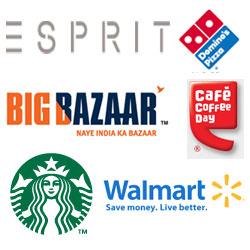The year 2012 goes down as the year of big ticket deals in the consumer sector and big bang reforms, with the opening of multi-brand retail to foreign investors, even as poor economic vibes affect consumer discretionary spends in some bellwether segments.
In this quick rewind, VCCircle takes you through the five highlights of the past 12 months in the consumer sector.
Retail: Welcome Walmart
The hottest topic for the sector this year was undoubtedly the reform to allow foreign investors to own up to 51 per cent in multi-brand retail besides allowing FDI up to 100 per cent in single brand retail. Although it would not lead to any change in one of the emerging areas, that of retailing via the internet, as e-commerce has been kept outside its purview, it would set the tone for more investments and more activities in organised retailing.
In the short run, the policy may lead to changes in the operating structure of a few existing retail ventures which are run based on a brand licensing pact where the local partners are the ones running the show. With the reforms in place, now the foreign retailers can be in the driver’s seat. But the real change will happen going forward.
At present, the local retail sector is dominated by specks of small mom-and-pop retailers, spread across the length and breadth of the country including the urban areas.
However, the year 2013 will bring scale to the sector, says Ankur Bisen, associate vice-president at the consultancy firm Technopak Advisors. As the retail market size jumps from the current $490 billion to $810 billion by 2021, corporatised or organised retail is likely to rise from 7 per cent of the total market share to 20 per cent, estimates Technopak.
Therefore, even as the world’s top retailer Walmart struggles with alleged bribes it paid for policy lobbying, the market housing the world’s second largest population is now open to its ilk, although partially. After all, parts of the country would not immediately see the giant stores with ‘everyday low pricing’ and the final decision would rest with state governments.
The end result would still be huge investment opportunity for foreign giants like Walmart, Carrefour, Ikea, Tesco and a partnership possibility for local incumbents like Future Group’s Big Bazaar. An associated repercussion would be the impact on realty prices and the rise in demand for commercial realty space, which remains stung after the 2008 slump.
Deal-making: PEs open money tap, Johnnie Walker & McDowell’s now bros
The year has seen the biggest alternative investment deal in the fast moving consumer goods space (FMCG) with Singapore’s sovereign wealth fund Temasek pumping $135 million in Godrej Consumer. Temasek struck a double at the fag end of the year by picking almost a fifth of the group firm Godrej Agrovet for $105 million.
It was not just PE firms who were active, though. Diageo, the world’s largest spirits company by revenue, struck a deal to buy a strategic stake in United Spirits. The deal, which could top $2 billion in final value, would give Diageo, a bit player in India, a huge fillip against its more entrenched rival Pernord Ricard.
While top consumer goods giants like Unilever and P&G are already big players across various sectors in India, the diversity of the Indian market has created many significant local FMCG firms. These could be set for consolidation going forward and could also be an investment opportunity for private equity firms to bankroll global expansion.
Investment themes: QSR chains, dairy dominate
If we look beyond the top deals in terms of value, there is another clear trend – that of money flowing into quick service restaurant (QSR) chains as consumer discretionary spends get channelled towards ‘eating out.’
The year has witnessed the emergence of a new bunch of food entrepreneurs and scores attracting both venture capital and private equity money.
While Wipro chief Azim Premji backed JSM Corp, which runs Hard Rock Cafe and California Pizza Kitchen restaurants in India, New Silk Route invested $38 million in South Indian chain Adigas Fast Food and the Indian Angel Network invested in Mumbai-based Mexican QSR chain Poncho. Among other deals, Correa Hospitality invested $5 million in another QSR chain called Fishtro.
Investors would be hoping to recreate the success of Jubilant Foodworks that has the master franchise for running Domino’s pizza chain in India. The fast-growing firm, which went public a few years ago, now commands over $1.5 billion in market cap (just a shade below the NYSE-listed company that owns the brand).
Dairy has been another key theme in 2012. While some companies like Tirumala Dairy attracted PE funding in the past, this year, in the largest-ever deal in the Indian dairy space, IDFC PE invested Rs 155 crore ($29 million) in Parag Milk Foods and Rabo Equity-advised fund backed Prabhat Dairy.
The attraction of dairy firms is a no-brainer. Dominated by co-operatives in urban markets and a largely fragmented market, served by local cattle owners in smaller towns, the few private dairies present a huge opportunity. As the income profile of the Indian population moves up, the consumption of dairy products is also rising.
Starbucks & coffee chain biz
The joke goes that the queues to enter Starbucks’ first ever outlets in India were so long that local chai wallahs were seen selling cuppas to those waiting to experience the iconic coffee chain’s brew right here in India.
Although the world’s largest coffee chain operator has made a modest beginning with a few outlets in Mumbai and is, at least, a few years away from making a mark in the country like the entrenched players such as Café Coffee Day (backed by KKR and other PE firms), its entry has rung the right bells.
Starbucks has struck a key partnership with Tata Group which is not just financially strong but also has a deep backward linkage, with presence in both tea and coffee offerings.
On the flip side, there are rumours of Lavazza having a relook at India strategy after acquiring Barista a few years ago.
So there is still plenty of action in the works as far as your next mocha goes.
Not all gung-ho, but holds promise
Lavazza is not an outlier, having second thoughts on India. Many foreign consumer goods and services firms who tried to re-engineer their international success formulas have realised the diversity and the challenges of operating in India. This comes in terms of brand positioning, low personnel cost being outweighed by higher expenses such as real estate space and as some high profile cases like Reebok suggest, even corporate governance issues.
Other points of caution for the consumer sector came with the fall of Ebony, one of the first malls in India, and the apparent shutdown of Esprit in the country due to losses, in spite having a strong partner in Aditya Birla Group.
Also, existing organised sector retailers who have struggled in generating profits continue to restructure by shutting some stores and opening others, indicating they are still some way in stabilising operations.
Add to it the tenuous consumer sentiment due to high interest rate regime which has punctured car sales – it is seen as a bellwether for discretionary spends.
The silver lining is that this may change soon as the banks cut rates and the worse could be behind the carmakers. And the endgame would still be dictated by the burgeoning population of middle-class consumers. This segment of consumers, which proved to be a chimera (due to lower purchasing power than anticipated) almost a decade ago after attracting hordes of foreign investors, is finally waking up. This is good news for consumer goods and services companies, as well as investors looking to make money by backing the firms in the business.
(Edited by Sanghamitra Mandal)






